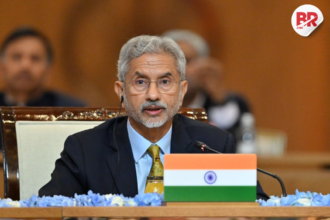
Elon Musk is officially out of the White House. After 129 dramatic days leading the Department of Government Efficiency (Doge), the billionaire’s controversial government run has come to an end. President Trump, never short on flair, praised Musk’s exit by saying he’ll “always be with us.”
So what actually changed? And what does it mean for regular Americans?

Plenty, if you ask Doge. The agency, created to gut bloated budgets, claims it saved $175 billion through cancelled contracts, mass layoffs, and aggressive program shutdowns. That includes cutting over 260,000 federal jobs and scrapping major aid programs.
But critics—and fact-checkers—aren’t fully convinced. A BBC report found much of the savings remain unverified. Some judges even halted layoffs, calling them reckless. In one alarming case, employees guarding America’s nuclear arsenal were almost fired by mistake.
Musk brushed off concerns. “We will make mistakes,” he said in February, after Doge axed a Mozambique aid program, thinking it was Gaza. “But we’ll act quickly to correct them.”
The Blurred Line Between Business and Power
From the start, Elon Musk’s government role raised eyebrows. He wasn’t elected. He wasn’t vetted like a cabinet official. Yet there he was—cutting budgets, ordering agency reviews, and appearing alongside Trump in the Oval Office.
Why the skepticism? His companies—like SpaceX and Tesla—get billions from U.S. contracts. Critics, mostly Democrats, called it a conflict of interest. Others accused him of using his position to sell Starlink overseas.
When Tesla vehicles were paraded on the White House lawn? That didn’t help optics.
But Trump and Musk both waved off concerns. Ethics, in this administration, remains a moving target.
Also Read $135 Billion Lost? Grok’s Shocking Take on Elon Musk’s DOGE ‘Achievements’
A Sharp Turn Toward Isolation
The global impact of Musk’s stint was just as loud. His department slashed over 80% of USAID programs. These cuts hit education for Afghan women, famine response in Sudan, and health clinics for marginalized groups.
Critics say the U.S. lost more than just programs—it lost influence. USAID was a key piece of soft power. Now, much of it is gone.
Musk defended the move, calling foreign aid “wasteful.” But the vacuum is real—and others, like China, are already stepping in.
Conspiracies, Chaos, and Cabinet Tensions
No Musk saga is complete without some internet-fueled mayhem. From suggesting Fort Knox had been “emptied” to warning of “genocide” in South Africa, Elon Musk brought social media chaos into the heart of U.S. diplomacy.
Things reached a boiling point in May, when Trump confronted South Africa’s president using discredited memes shared by Musk.
Inside the White House, it wasn’t all love either. Cabinet officials reportedly clashed with Musk, warning his cuts were going too far. Trump brushed it off—but the tension was visible.
The final straw? Musk publicly criticized Trump’s “big, beautiful” budget bill. He said it “undermines” Doge’s work by bloating defense and slashing taxes for the wealthy.
A billionaire calling out a billionaire. In Trump’s White House, that’s as close as you get to a resignation letter.
Elon Musk’s White House adventure was short, sharp, and seismic. He slashed budgets, sparked global backlash, and stirred more chaos than calm. Whether he saved the government—or just downsized it into dysfunction—is still up for debate.
What’s certain? The richest man in the world left a very expensive dent in Washington’s furniture.
Also Read Donald Trump Praises Elon Musk, Announces Joint Press Conference at White House












